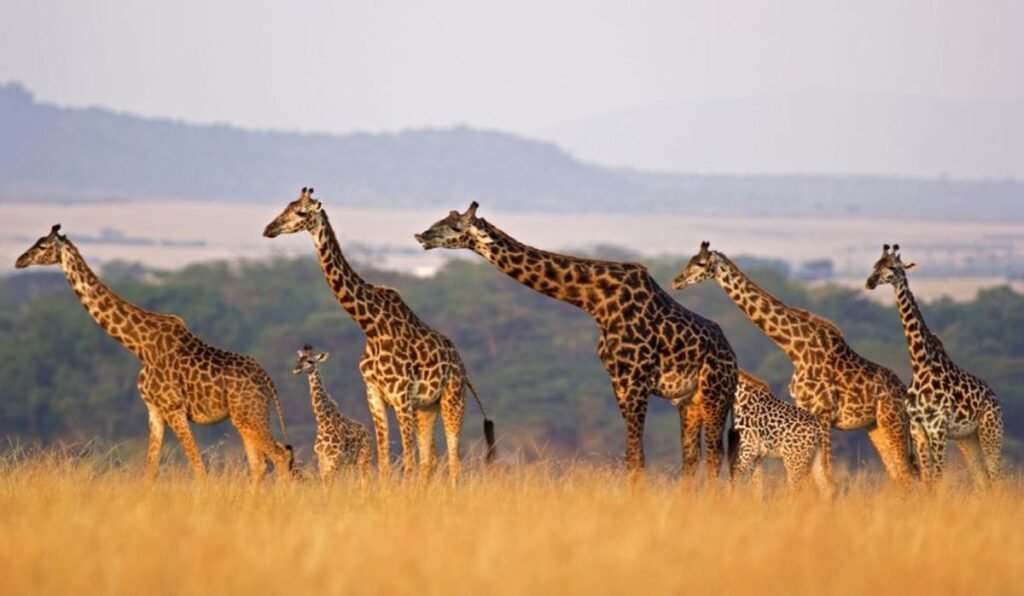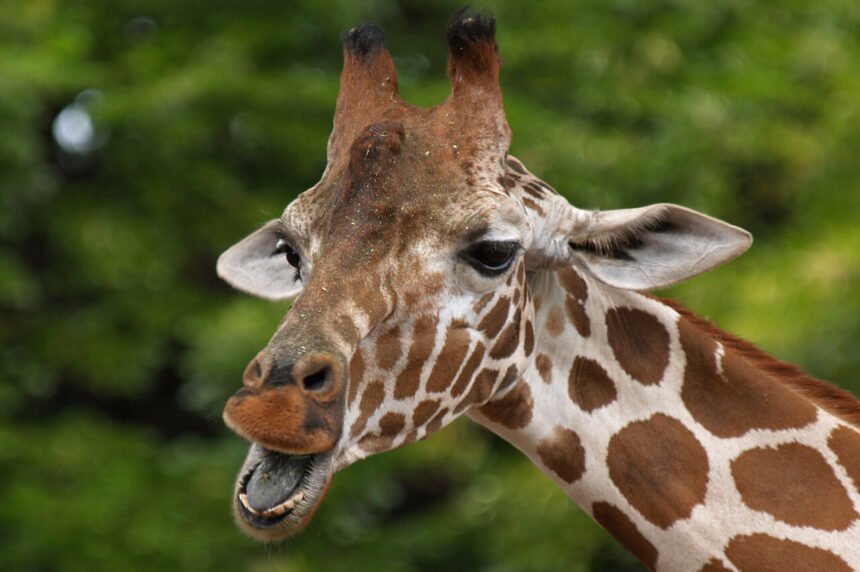World Giraffe Day, observed on June 21st, celebrates the iconic giraffes of Africa and raises awareness about their declining populations due to habitat loss and poaching.
Recognized by the Giraffe Conservation Foundation, the day emphasizes the ecological importance of giraffes and encourages conservation efforts to safeguard their future.
Celebrate World Giraffe Day
Each year on June 21st, people worldwide unite to honor World Giraffe Day, an international celebration dedicated to the majestic giraffes of the African savanna.
Organized by the Giraffe Conservation Foundation (GCF), this day highlights the awe-inspiring height, elegance, and unique patterns of giraffes. It also serves as a call to action to safeguard these gentle giants, whose populations are declining due to habitat loss, poaching, and other human-made challenges. World Giraffe Day reminds us of the urgent need to protect these magnificent creatures so that future generations can continue to marvel at their presence on the plains.

Majestic Giraffes of Africa
Giraffes are renowned for their elongated necks and distinctive coat designs, which fascinate people of every generation. These graceful giants, found in the savannas and forests of Africa, captivate both wildlife lovers and casual onlookers. Their towering stature amidst acacia trees epitomizes the untamed essence of the African wilderness, making them beloved symbols of its beauty and diversity.
Earth’s Tallest Herbivores
Giraffes, known as the tallest land animals, can grow up to 18 feet tall, with males reaching impressive heights. Their lengthy necks, extending over six feet, enable them to browse leaves high in trees, inaccessible to other herbivores. This feeding behavior not only ensures their survival but also shapes their habitat by diversifying vegetation. Even newborn giraffes are strikingly tall, standing around six feet at birth, towering over most humans. This height advantage allows them to swiftly master walking and running, crucial skills for evading predators in their natural environment.
Unique Coat Patterns of Giraffes
The coat patterns of giraffes are as distinctive as human fingerprints, adding to their individual allure. These patterns, composed of spots and patches, differ not only between individual giraffes but also across different species and regions. The spots come in shades ranging from light tan to dark brown and play a crucial role in camouflage, aiding giraffes in blending seamlessly into their surroundings to evade predators.

Four Distinct Giraffe Species
Giraffes are fascinating creatures, each belonging to one of four unique species, distinguished by their habitats and distinctive coat patterns:
- Northern Giraffe:
These giraffes are found in central and eastern Africa. They have a smaller population compared to other species and are known for their irregular, leaf-shaped spots.
- Southern Giraffe:
Inhabiting southern Africa, this species is more abundant. They can be identified by their rounded or blotched spots, which set them apart from other giraffes.
- Reticulated Giraffe:
Native to the Horn of Africa, these giraffes have a striking pattern resembling a net, with white lines separating their dark patches. Their coat is uniquely beautiful and easily recognizable.
- Masai Giraffe:
Found in East Africa, particularly in Kenya and Tanzania, Masai giraffes are the tallest of all giraffe species, with males reaching heights of nearly 20 feet. They are distinguished by jagged, vine-like spots that cover their bodies.
Each species has adapted to its specific environment, showcasing a remarkable diversity within the giraffe family.
Silent Threat to Giraffes
Despite their beloved status, giraffes are silently slipping towards extinction. Over the past three decades, their populations have plummeted by nearly 30%, with some regions witnessing declines as severe as 95%. This alarming trend stems primarily from habitat loss, poaching, and escalating conflicts with humans.
Human activities like agriculture, urban expansion, and deforestation have ravaged giraffes’ habitats, shrinking their living spaces drastically. Poaching remains a persistent menace, driven by demand for giraffe meat, hides, and other body parts. Despite legal protections, illegal hunting persists, exacerbating their decline.
Encounters between humans and giraffes, increasingly common as human populations expand into wildlife territories, often result in harm to giraffes seeking food or shelter. The term “silent extinction” aptly characterizes their plight, as giraffes receive far less attention compared to more high-profile endangered species like elephants or tigers. This World Giraffe Day serves as a crucial reminder to address these pressing issues and safeguard the future of these majestic creatures.
The Ecological Importance of Giraffes
Giraffes play a crucial role in their ecosystems by shaping the landscape and supporting biodiversity. As they feed on leaves high in trees like acacias, they help manage vegetation by pruning and preventing any one plant species from dominating. This activity also opens up the canopy, allowing sunlight to reach the ground and fostering a diverse range of plants.
Their browsing behavior creates habitats for various animals by providing trimmed trees that serve as food and shelter for birds, insects, and smaller mammals. Additionally, giraffes aid in seed dispersal as they move, spreading seeds through their droppings and promoting plant growth over large areas.
Maintaining biodiversity is another key role of giraffes, as their management of vegetation supports a variety of plant and animal species. This diversity enhances ecosystem resilience, ensuring it can recover from disturbances such as droughts or diseases.
Furthermore, giraffes themselves serve as a vital food source for predators like lions and hyenas. Their presence in the ecosystem thus helps maintain the balance within the food web.
Overall, protecting giraffes is essential not only for their survival but also for preserving the intricate balance of their ecosystems. A decline in giraffe populations can have far-reaching effects on countless other plants and animals that depend on them.
Protect Giraffes: Conservation Efforts and How You Can Help
Conserving giraffes is crucial for maintaining ecological balance and preserving biodiversity in their habitats. The Giraffe Conservation Foundation (GCF), Africa’s sole NGO dedicated to giraffe conservation, focuses on scientific research, habitat restoration, and community involvement.
Their efforts have successfully reintroduced giraffes to regions where they were previously extinct. Through translocation initiatives, GCF has established 18 new giraffe populations and rehabilitated over 12 million acres of habitat.
You can support giraffe conservation by adopting a giraffe through GCF, which funds essential programs and makes for meaningful gifts. Donations directly contribute to securing giraffe habitats, funding ongoing research, and aiding translocation efforts. Another way to help is by raising awareness on World Giraffe Day through social media challenges. By sharing giraffe-themed content with hashtags like #StandTallForGiraffe and #WorldGiraffeDay, you can inspire others to join the cause and protect these magnificent animals.








